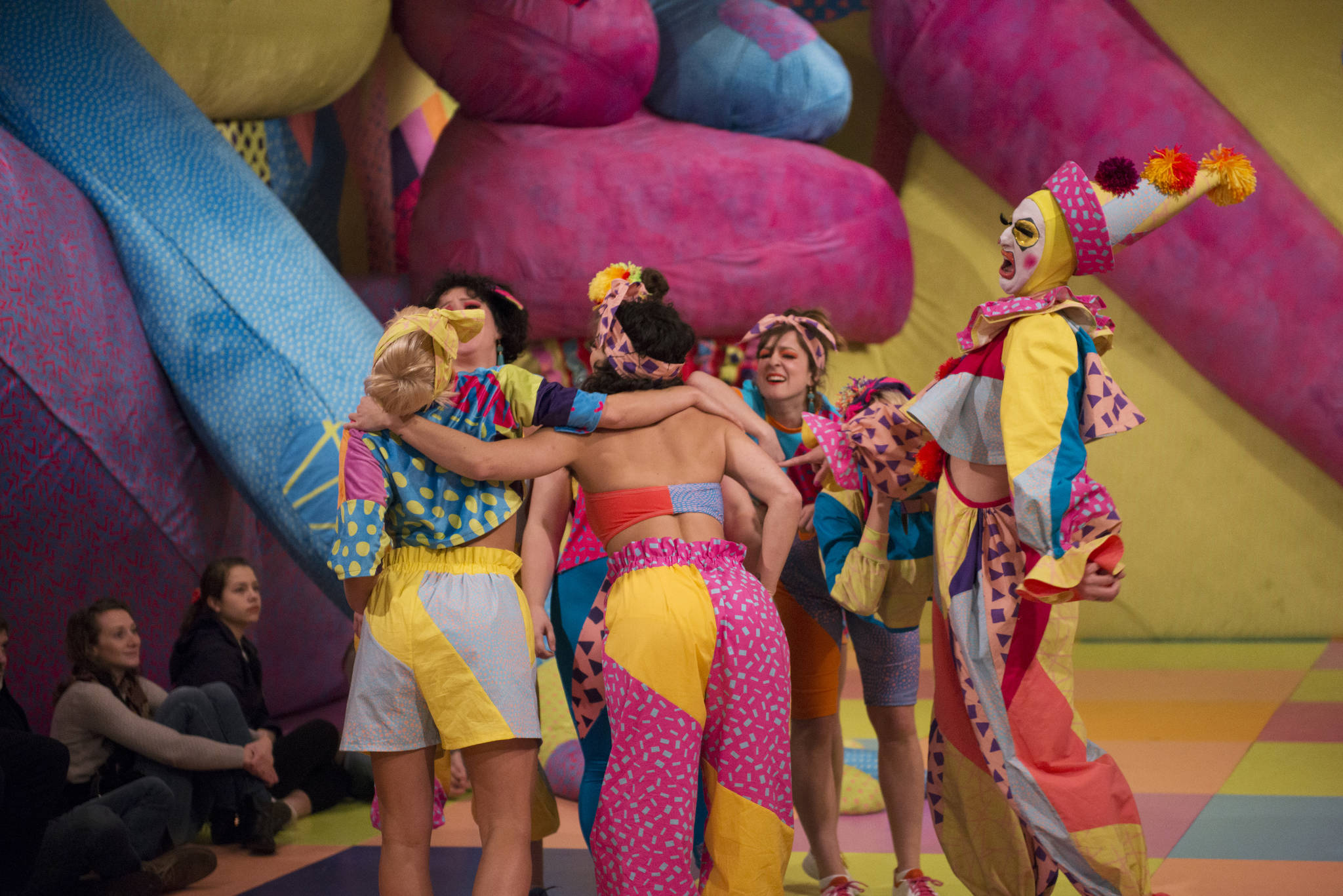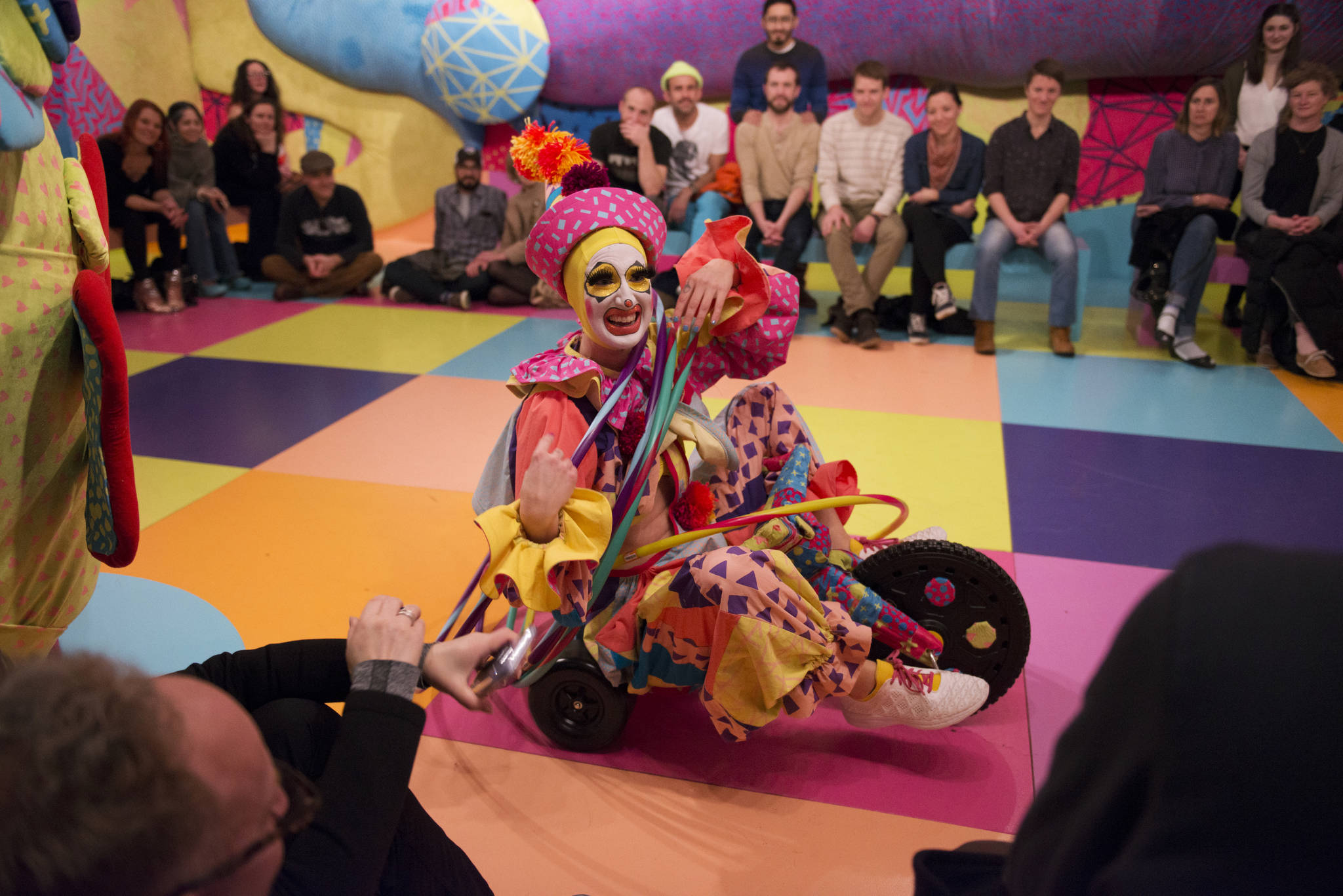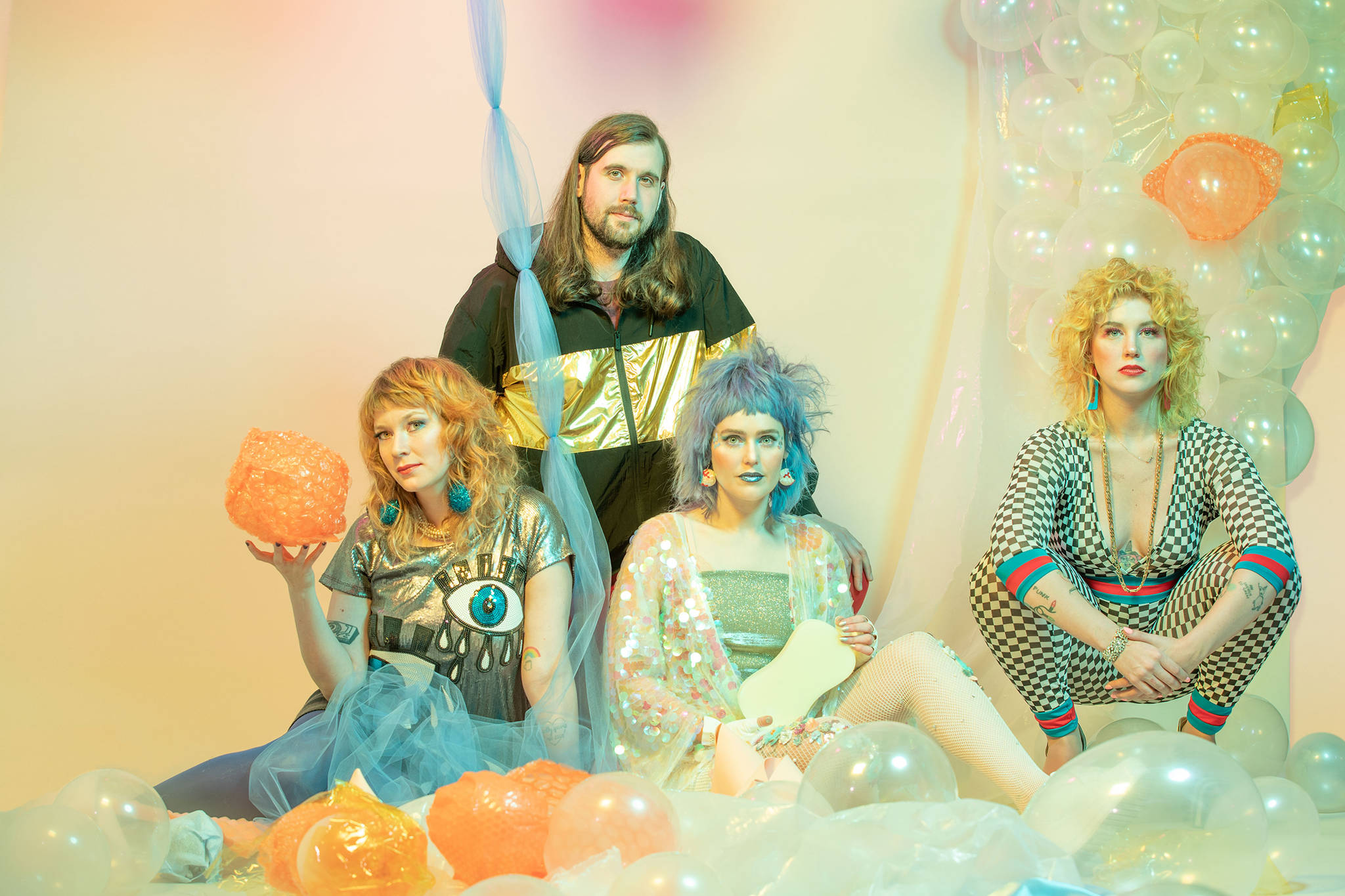The world at large looks down on exhausted artistic performers. Why are you so tired from acting in a movie/performing a stand-up set/dancing onstage? That’s not a “real” job—the kind with tiring, repetitive manual labor. But what’s often lost in the equation is the outside expectation for performers to be “always-on.” If a comedian isn’t always-on, every interaction that isn’t funny gets counted as a strike against them; same for an actor with a welcoming charisma—even if you’re having a bad day, a slightly dickish move is seen as a betrayal.
Cherdonna Shinatra’s Ditch at Frye Art Museum makes a case that it’s not just professional artists who have to deal with the plight of being always-on. Women do too.
For the initiated, Cherdonna Shinatra is the wildly over-the-top character dancer Jody Kuehner has been portraying on various Seattle stages for years. She’s a mildly trippy (and often-tripping) cartoonish faux queen (a woman doing female drag).
Ditch brings Cherdonna’s mayhem to the museum space—a performative visual art. Over 80 days at the Frye (through April 28), Cherdonna and her new queer dance company DONNA put on once-a-day free 45-minute performances in their custom-decorated gallery. The space looks like Cherdonna’s brain gleefully vomited its cheery self all over the walls—part Pee-wee’s Playhouse, part Day-Glo Trapper Keeper, part Saved By the Bell opening credits. It’s a mostly open space to accommodate the performance, save three details of note: a no-airs-of-subtlety vaginal entrance point in one corner from which the dancers enter the space; a very large almost-plushy fabric statue of MomDonna (the show’s aghast-looking matriarchal disembodied head); and a few benches for patrons.
From the moment she emerges from the metaphorical womb, the Cherdonna plays up her clown side more than ever, dressed in garb reminiscent of the classical sad clown, Pierrot, and brandishing a honk horn and toy hammer. The choreography places the DONNA dancers (who have a mainlining-Fruity Pebbles demeanor) as Cherdonna’s always-smiling accompaniment while she stumbles around stage with the grace of an awkward swan trying to look majestic while its legs are caught in plastic six-pack rings. The theme—the relentless drive to be an always-on people-pleaser—is evident from the jump, as the clown presents her nervous, desperate-for-acceptance grin directly to certain to seated patrons while her hula-hoop-clad dancers form peacock-like plumage behind her and a circus fanfare blasts from the speakers.
For her next act, Cherdonna amusingly struggles to ride a Big Wheel for a solid five minutes. There’s a visible tension between the effort put in and the lack of a tangible result as she even turns hopelessly to the static MomDonna for approval and validation that simply won’t come. It’s exaggerated presentation as performance. As Cherdonna begins to fray and nervous-laugh from the situation being a total non-starter, the DONNA dancers keep face—operating as the societal hive not willing to let the queer one who’s having a hard time ruin their own outward appearances, eventually reaching the point where they have to pull and drag Cherdonna away.
Things then shift, with the bright sonic fanfare replaced by dark, ambient droning. This doesn’t keep the DONNA dancers from still acting like they’re walking on sunshine, but Cherdonna increasingly becomes a more isolated, depressed clown—the abandoned ringleader who can no longer find a hand to help her back up. She wants to be always-on, but the earlier crack she showed left her without support. She can try to draw humor from her pain, but when the laughs and admiration aren’t coming from the world at large, it’s easy to drown in said pain.
The onslaught of unreachable feminine expectations comes to a head in a segment set to an audio loop of Peggy Lee’s “I’m a Woman.” Specifically, the line “Lay down at five, jump up at six, and start all over again” gets repeated again, and again, and again, and again as Cherdonna lip-syncs. (I shudder to think how many thousands of times the cast has had to hear that loop.) As the DONNA dancers continually run through the same swagger-heavy steps without changing a thing, the song and its sentiment slowly begin to pummel on Cherdonna. The women around her push through the mind-numbing monotony to play the part. They’re always-on. But our clown can’t take this socially-demanded feminine plight. She just wants the laughs and any love. But maybe there’s not a place for that in the world of Ditch.
And then the music stops. DONNA leaves.
And there, in the end, Cherdonna’s left alone. Her world of motion and noise has become a silent void. Honestly? It’s kind of peaceful and freeing. She cranes her neck around before slinkily hopping out of the room, finally ditching the colorful crisis…
…at least until tomorrow’s performance.
Cherdonna Shinatra: Ditch
Thru April 28 | Tues & Fri: 11:30 a.m. – Wed, Sat, & Sun: 2 p.m. – Thurs 5 p.m. |Frye Art Museum | Free | fryeartmuseum.org










